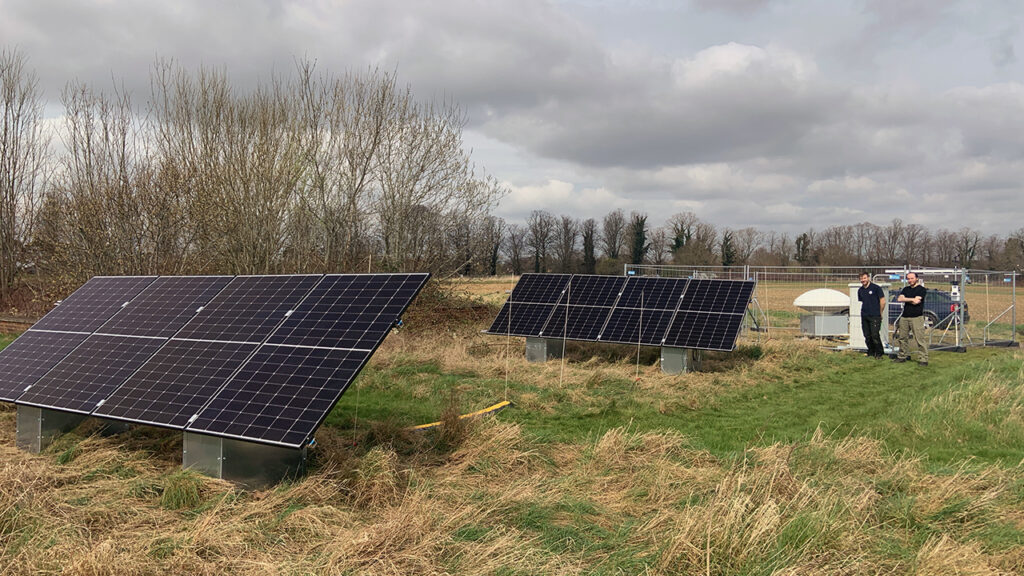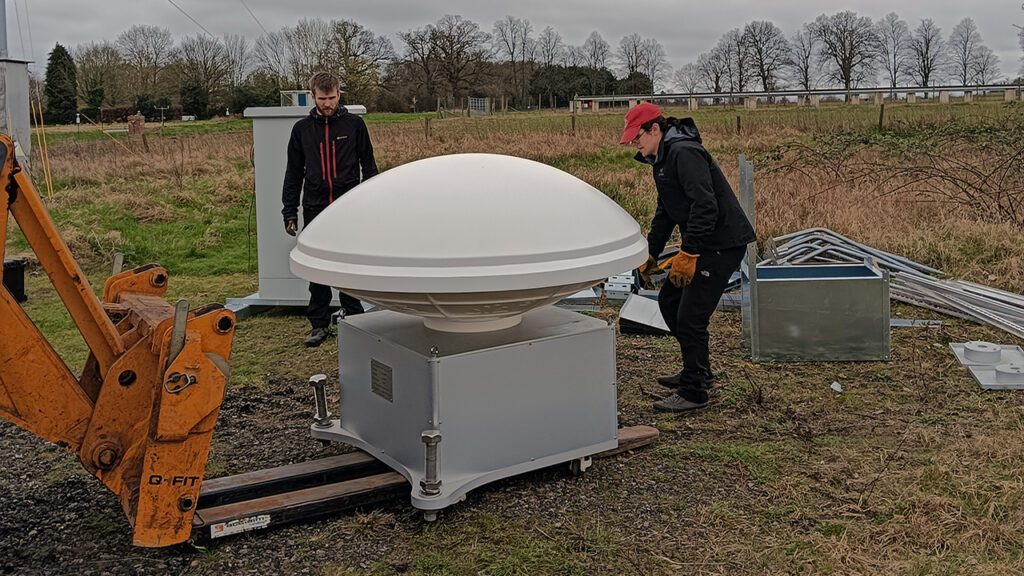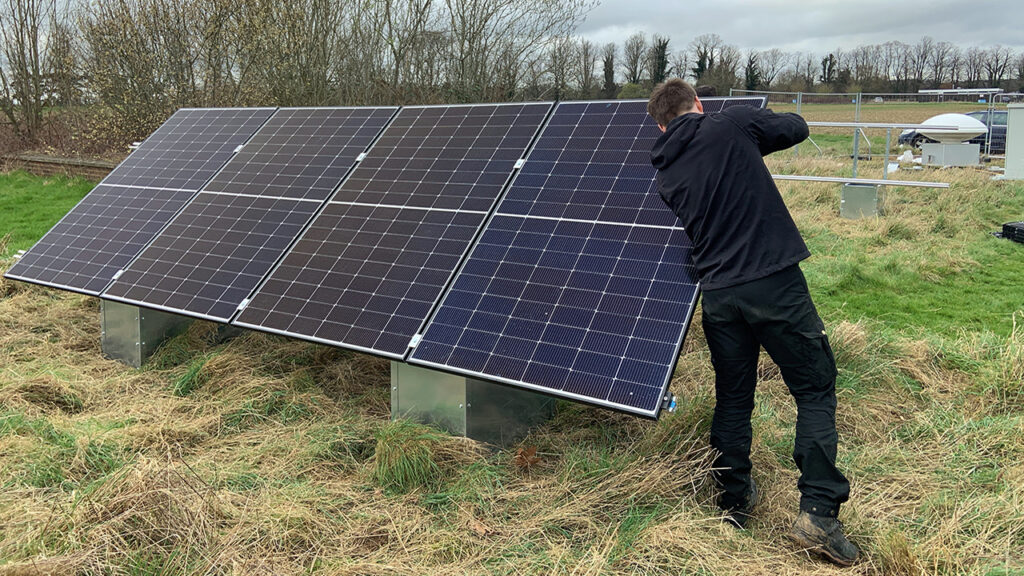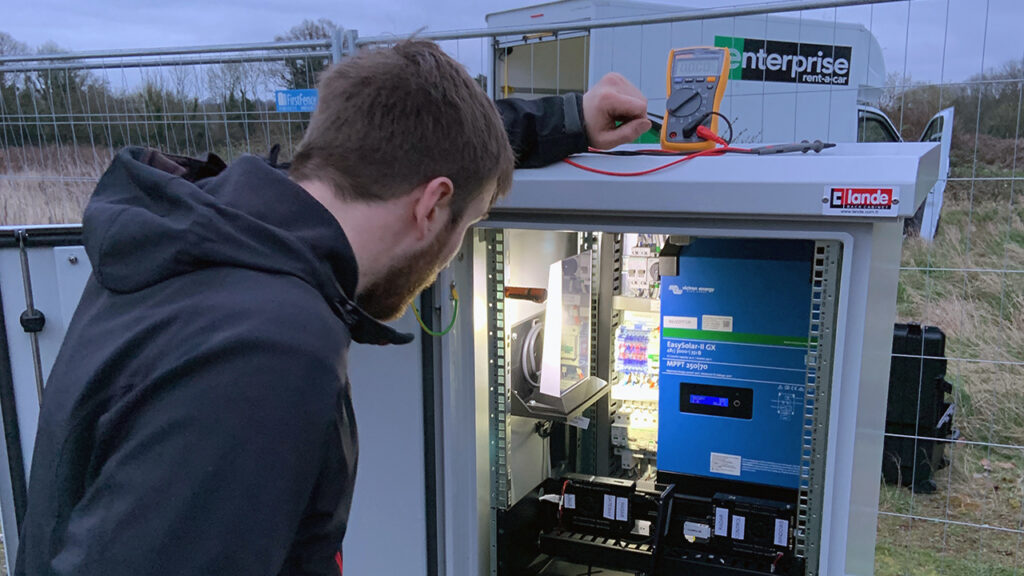
Scientists get set to spot insects with new sun-powered radar
Researchers from the National Centre for Atmospheric Science and Rothamsted Research are working together to track insect species in the sky, using technology usually found in weather forecasting.
Scientists have recently deployed a vertically-looking entomological radar in Hertfordshire, to monitor insect biodiversity.
Alex Fearn is a Radar Support Engineer and Ryan Neely is an Associate Professor of Observational Atmospheric Science – both work at the National Centre for Atmospheric Science based at the University of Leeds. We asked them about the radar and how it is being used to help understand insect behaviour and improve estimates of insect biodiversity change in the UK.
What is a vertically-looking entomological radar and how does it work?
“A vertically-looking entomological radar is a specialised type of radar system designed to track flying insects in the atmosphere. Unlike conventional radar systems that are usually oriented horizontally to detect weather patterns, entomological radars are pointed vertically to monitor the movement of insects. These radars emit electromagnetic waves vertically into the sky and detect the reflections from insects flying within the radar’s range. By analysing the radar returns, researchers can gather data on insects,” explains Ryan Neely, Associate Professor of Observational Atmospheric Science at the National Centre for Atmospheric Science.
Why is the radar being used by ecologists?
Ecologists are tracking the movements of insects to help understand their populations – where and how they fly, and how many there are.
Many different types of insect migrate using the wind, often several hundred metres above the ground. At these heights, the wind can help insects to travel tens or hundreds of kilometres in a single flight. Understanding the weather, especially wind direction and strength, is essential for monitoring migrating airborne insects. Observation of high-flying insects is very difficult, especially at night, so remote-sensing technologies are required and offer unparalleled insights.
“An entomological radar, with a vertical beam, provides the solution. This kind of radar, plus specialist data analysis software, will be able to determine different insect species in the sky – by categorising the size, shape, and alignment of aerial objects it picks up in the moving air above. Insects are also unaffected by flying through the radar beam,” outlines Ryan Neely, Associate Professor of Observational Atmospheric Science at the National Centre for Atmospheric Science.
Why do we need to monitor insects in the air?
Insects help to hold ecosystems together – providing invaluable ecosystem services such as pollination, biological control of pests, and as bio-indicators or healthy streams and soils.
But insect species are threatened, and populations are in decline, due to climate change and human activities such as using insecticide, light pollution, and land use change including intensive agriculture and urbanisation.
The growing concern that insects are in widespread decline across the UK and beyond is supported by strong data evidence in certain areas, but proof of overall insect declines in the UK remains patchy. Ecologists, with the help of atmospheric scientists, are collecting more data to help track insect biodiversity changes.
What was involved in deploying the radar in Hertfordshire?
“The radar, power system, and solar panels were installed by a team of scientists and engineers at Rothamsted Research in Harpenden. With help from the Rothamsted staff, the system was installed, powered up and collecting data within two days,” explains Alex Fearn, Radar Support Engineer at the National Centre for Atmospheric Science.
“The radar runs completely on solar power in combination with a battery storage system, which was designed and built by the National Centre for Atmospheric Science. This allows the radar to run 24/7 and enables fully sustainable operation of the radar for the first time. The system also incorporates Starlink internet to allow for remote monitoring of the power status and data retrieval from the radar.”
“Being totally off grid allows scientists to be flexible in siting the radar, enabling research measurements to take place in areas that were previously unsuitable due to a lack of power and internet. It also means that we can control the power source and can ensure reliability and sustainability.”



